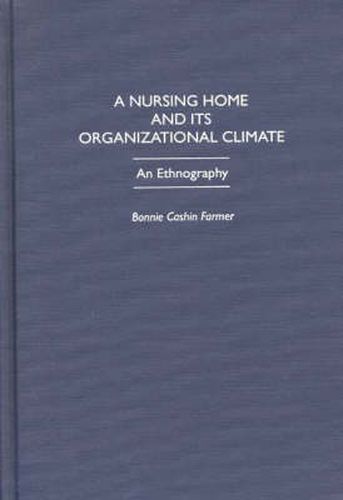Readings Newsletter
Become a Readings Member to make your shopping experience even easier.
Sign in or sign up for free!
You’re not far away from qualifying for FREE standard shipping within Australia
You’ve qualified for FREE standard shipping within Australia
The cart is loading…






Nursing home reform, Professor Farmer asserts, calls for increased emphasis upon issues related to life rather than care. Organizational climate, which reflects the nursing home’s unique position to impact life issues, provides a conceptual framework for effective interventions, evaluations, and ultimately meaningful reform.
The general atmosphere of most nursing homes remains overwhelmingly negative in spite of those few homes that are credited with excellence. Professor Farmer believes that the concept of organizational climate holds promise for better understanding the complexities and impact of atmosphere in any one nursing home. At the same time, organizational climate as a concept is poorly understood. There is a need to rethink the concept and return to the original notion of weather as its metaphor. Farmer attempts this in her case study by describing organizational climate where it can best be captured.
Practitioners of long-term care, from the fields of administration, geronotology, nursing, nutrition, policy makers, occupational and physical therapy, social work, and therapeutic recreation will find the insights of this study of great value, as will graduate students, scholars, and others concerned with organizational studies and issues in gerontology.
$9.00 standard shipping within Australia
FREE standard shipping within Australia for orders over $100.00
Express & International shipping calculated at checkout
Nursing home reform, Professor Farmer asserts, calls for increased emphasis upon issues related to life rather than care. Organizational climate, which reflects the nursing home’s unique position to impact life issues, provides a conceptual framework for effective interventions, evaluations, and ultimately meaningful reform.
The general atmosphere of most nursing homes remains overwhelmingly negative in spite of those few homes that are credited with excellence. Professor Farmer believes that the concept of organizational climate holds promise for better understanding the complexities and impact of atmosphere in any one nursing home. At the same time, organizational climate as a concept is poorly understood. There is a need to rethink the concept and return to the original notion of weather as its metaphor. Farmer attempts this in her case study by describing organizational climate where it can best be captured.
Practitioners of long-term care, from the fields of administration, geronotology, nursing, nutrition, policy makers, occupational and physical therapy, social work, and therapeutic recreation will find the insights of this study of great value, as will graduate students, scholars, and others concerned with organizational studies and issues in gerontology.